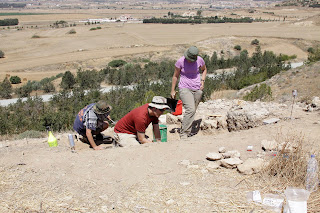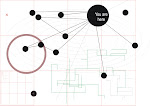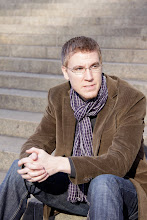
An Artist Residency is often described as “the space to work.” This means for many both physical space as many residencies provide living and working quarters. But often more importantly for the artist it provides time to pursue some sort of project deemed valuable by the residency hosts.
The PKAP residency has provided both time and space for me to work. For me, that means photographing, reading, and writing about the significance of place/space/landscape. One of the 2 books I took along is Landscapes of the Sacred by Belden Lane who teaches at St. Louis University.
Yesterday I was reading how place is radically different in the thought of Aristotle and Plato. Aristotle preferred “topos” while Plato emphasized “chora.” Aristotle’s topos suggests a point on a map or an objective container that exerts no influence on those who enter those places. We see this legacy still at work today in cartography and GPS systems able to pinpoint location. Plato however takes an experiential view of place in his conception of chora. He suggests that place is the “wet-nurse, suckler and feeder of all things.” Plato is interested in the human connection to a particular place and the “choreography” of the reciprocal dance of humanity and environment.
What struck me as I read over Lane’s thoughts was how in the past week I have moved from topos to chora. The night before I left Sioux Falls, I sat in the basement with my friend Terence Mournet trying to find the sites on Google maps…a perfect, high tech example of Aristotle’s topos. It was an objective space…coordinates on a map…exerting minimal influence upon me save for some anxiety of the unknown. And now, after less than a week on this beautiful Mediterranean island, topos has become chora.
But how does this transformation of place come about? What moves someone from topos to chora? Lane suggests that is through the performance of various rituals. Philip Sheldrake would similarly suggest that it is through the accumulation of memory. Ritual and memory being intimately related, place emerges through ones daily activities which may be conceived of as a form of ritual. From our early rising hour to the drive out to the sites, dropping people off at their respective trenches, to pulling out the tools for the day (which perhaps become sacred objects by this performance), the digging, sifting, picking, etc. These rituals, now well into the second week for some, and years for others, all feed the accumulating memory from which chora would seem to emerge from.
Bill Caraher pointed out another layer to these two words yesterday as well that adds some nice texture to the conversation. My Greek from seminary is very rusty (sorry Dr. Rainbow), but an alternative meaning to chora is one of the goals of the project. Chora also means “country”. The Pyla -Koutsopetria site existed in an in-between state of sorts between city and country. The project, in some ways, is attempting to articulate the significance of this village. In this process, the site once located merely on a map for us all, is becoming significant place through our daily work here. Topos is giving way to chora.
The PKAP residency has provided both time and space for me to work. For me, that means photographing, reading, and writing about the significance of place/space/landscape. One of the 2 books I took along is Landscapes of the Sacred by Belden Lane who teaches at St. Louis University.
Yesterday I was reading how place is radically different in the thought of Aristotle and Plato. Aristotle preferred “topos” while Plato emphasized “chora.” Aristotle’s topos suggests a point on a map or an objective container that exerts no influence on those who enter those places. We see this legacy still at work today in cartography and GPS systems able to pinpoint location. Plato however takes an experiential view of place in his conception of chora. He suggests that place is the “wet-nurse, suckler and feeder of all things.” Plato is interested in the human connection to a particular place and the “choreography” of the reciprocal dance of humanity and environment.
What struck me as I read over Lane’s thoughts was how in the past week I have moved from topos to chora. The night before I left Sioux Falls, I sat in the basement with my friend Terence Mournet trying to find the sites on Google maps…a perfect, high tech example of Aristotle’s topos. It was an objective space…coordinates on a map…exerting minimal influence upon me save for some anxiety of the unknown. And now, after less than a week on this beautiful Mediterranean island, topos has become chora.
But how does this transformation of place come about? What moves someone from topos to chora? Lane suggests that is through the performance of various rituals. Philip Sheldrake would similarly suggest that it is through the accumulation of memory. Ritual and memory being intimately related, place emerges through ones daily activities which may be conceived of as a form of ritual. From our early rising hour to the drive out to the sites, dropping people off at their respective trenches, to pulling out the tools for the day (which perhaps become sacred objects by this performance), the digging, sifting, picking, etc. These rituals, now well into the second week for some, and years for others, all feed the accumulating memory from which chora would seem to emerge from.
Bill Caraher pointed out another layer to these two words yesterday as well that adds some nice texture to the conversation. My Greek from seminary is very rusty (sorry Dr. Rainbow), but an alternative meaning to chora is one of the goals of the project. Chora also means “country”. The Pyla -Koutsopetria site existed in an in-between state of sorts between city and country. The project, in some ways, is attempting to articulate the significance of this village. In this process, the site once located merely on a map for us all, is becoming significant place through our daily work here. Topos is giving way to chora.







